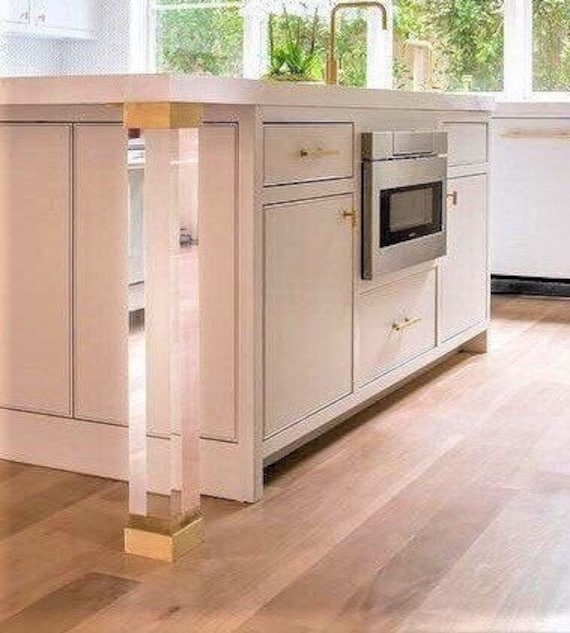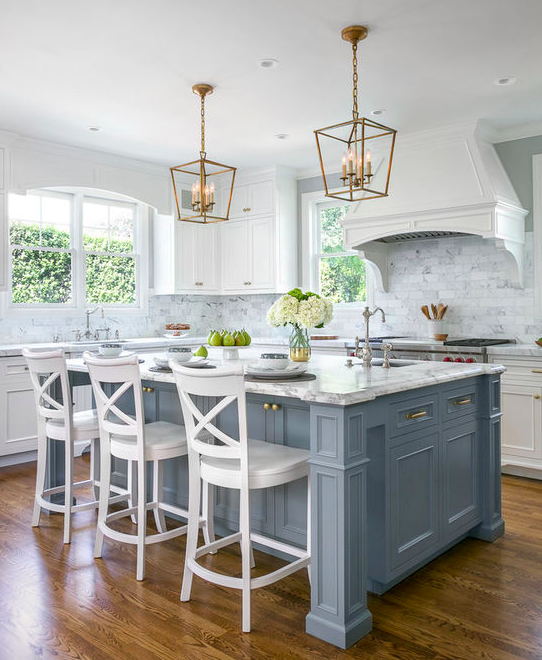A Comprehensive Guide to Choosing the Right Kitchen Island Leg
A Comprehensive Guide to Choosing the Right Kitchen Island Leg
Blog Article
Top Considerations When Selecting a Cooking Area Island Leg for Modern Kitchen Area Insides
In the world of modern-day kitchen area interiors, the selection of a kitchen area island leg is crucial, influencing both aesthetic appeals and functionality. As these elements link, they raise additionally inquiries regarding exactly how to achieve the perfect equilibrium between design and practicality, leaving one to contemplate the ramifications of each decision on the general kitchen area experience.
Material Choices
When it comes to picking a kitchen area island leg, material selections play an essential function in both appearances and performance. kitchen island leg. One of the most usual products consist of timber, metal, and composite options, each offering distinct benefits and potential downsides
Wood is favored for its warmth and traditional appeal, providing a classic look that complements numerous kitchen styles. It is highly flexible, enabling for modification in terms of coatings and shades. Nevertheless, wood may call for more maintenance to protect against warping or damages from wetness.
Steel, on the other hand, brings a commercial and modern-day panache to cooking area islands. Stainless-steel and wrought iron are preferred selections, known for their toughness and resistance to wear. They can hold up against the roughness of everyday usage yet might lack the warmth related to wood.
Composite materials, such as engineered wood or synthetic blends, provide a balance in between rate, toughness, and appearances. These options are usually made to imitate the appearance of natural products while supplying resistance to scratches and spills.
Inevitably, the selection of product must line up with the total cooking area layout and meant use, ensuring that the kitchen island leg is both practical and aesthetically appealing.
Design And Style
The style and design of a kitchen island leg considerably add to the overall aesthetic of the room, complementing the chosen product. When picking the leg layout, think about the building style of the cooking area. Smooth, minimal legs made of stainless steel or acrylic harmonize with modern styles, while ornate, turned timber legs enhance traditional or farmhouse aesthetic appeals.
Furthermore, the coating of the leg can influence the aesthetic influence; a refined chrome or matte black surface might evoke modern elegance, while distressed timber talks with rustic appeal. The leg's form likewise plays a vital function-- directly, angular forms share an even more industrial feel, whereas conical or rounded legs introduce a softer, a lot more inviting appearance.
Integrating attractive aspects, such as makings or decorations, can include personality and character to the kitchen area island, additional enhancing its duty as a centerpiece. Eventually, the picked leg design need to not just straighten with the total kitchen area layout yet also mirror the property owner's personal taste, guaranteeing that the kitchen island comes to be a unified and practical focal point within the modern-day kitchen inside.
Elevation and Percentages
Attaining the right elevation and proportions for a kitchen area island leg is crucial for both performance and looks. Cooking area islands commonly vary in height from 28 to 36 inches, depending upon their planned use-- whether as a cooking surface area, eating location, or workspace. Standard countertop height is approximately 36 inches, making it vital that the legs you choose complement this elevation to provide a seamless, integrated appearance.
Proportions additionally play an essential role in the visual equilibrium of the kitchen. A slender leg may be ideal for a minimalistic or modern island, while a more significant leg might be wikipedia reference required for rustic or typical styles.
When choosing the elevation and percentages of the kitchen area island leg, maintain in mind the general style style of your kitchen. This focus to information not only enhances the performance of the space however also adds to a visually appealing and natural interior style.
Security and Assistance
Continually ensuring security and support in kitchen area island legs is important for both safety and security and functionality. A sound cooking area island should hold up against daily usage, including weight from home appliances, cooking, and social events. Consequently, the option of legs should focus on durable materials and layouts that can provide ample support.
When evaluating stability, think about the leg's product-- light weight aluminum, steel, or wood commonly provide superior toughness compared to lighter options. Furthermore, the layout must include a broad base to disperse weight evenly and reduce the danger of tipping or tottering. Legs created with an A-frame or cross-bracing can substantially enhance security.

Integrating these factors to consider will not only enhance the general safety of the kitchen area space however also enhance the durability and capability of the cooking area island, making it a beneficial focal point in modern cooking area interiors.
Ending Up Touches
When it comes to finishing a kitchen area island, thoughtful completing touches can significantly enhance both its visual charm and performance. Selecting the best leg style is crucial, however a knockout post enhancing it with ideal details can change the entire area. Take into consideration adding ornamental elements such as toe kicks or baseboards that match the kitchen cabinetry or flooring to develop a smooth look.

A cohesive shade scheme and material selection will boost the kitchen island, making it a fascinating focal point. By paying focus to these completing touches, homeowners can develop a kitchen island that is both useful and lovely, providing to their lifestyle and layout choices.
Conclusion

In the world of modern kitchen interiors, the choice of a cooking area island leg is essential, influencing both aesthetic appeals and performance.The design and style of a kitchen area island leg significantly contribute to the general aesthetic of the space, complementing the picked material.Attaining the ideal height and proportions for a kitchen area island leg is vital for both capability and looks.Consistently ensuring stability and assistance in kitchen click for source area island legs is crucial for both safety and functionality.In recap, choosing a cooking area island leg for modern-day insides calls for careful factor to consider of material options, design style, elevation, percentages, and stability.
Report this page